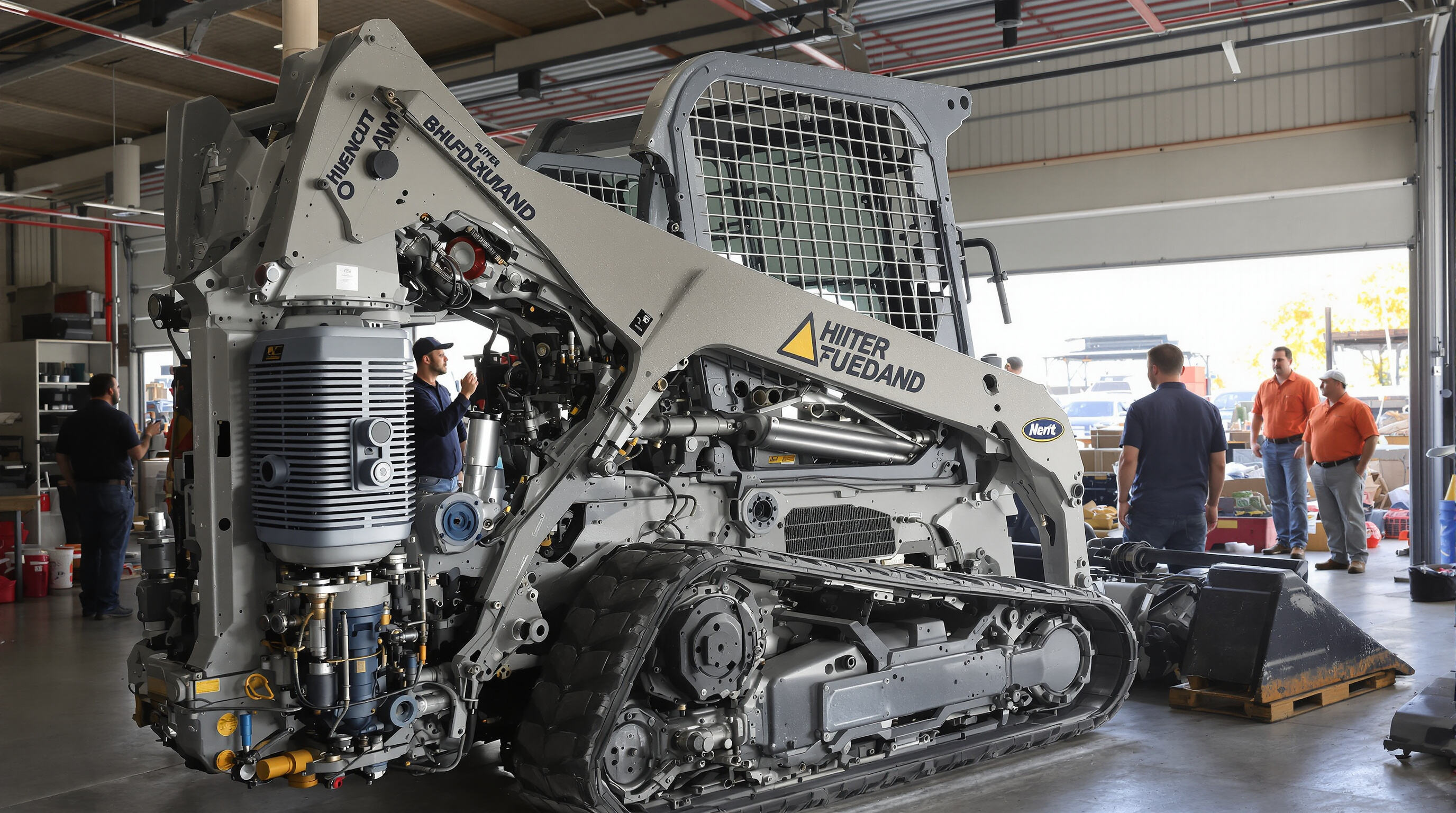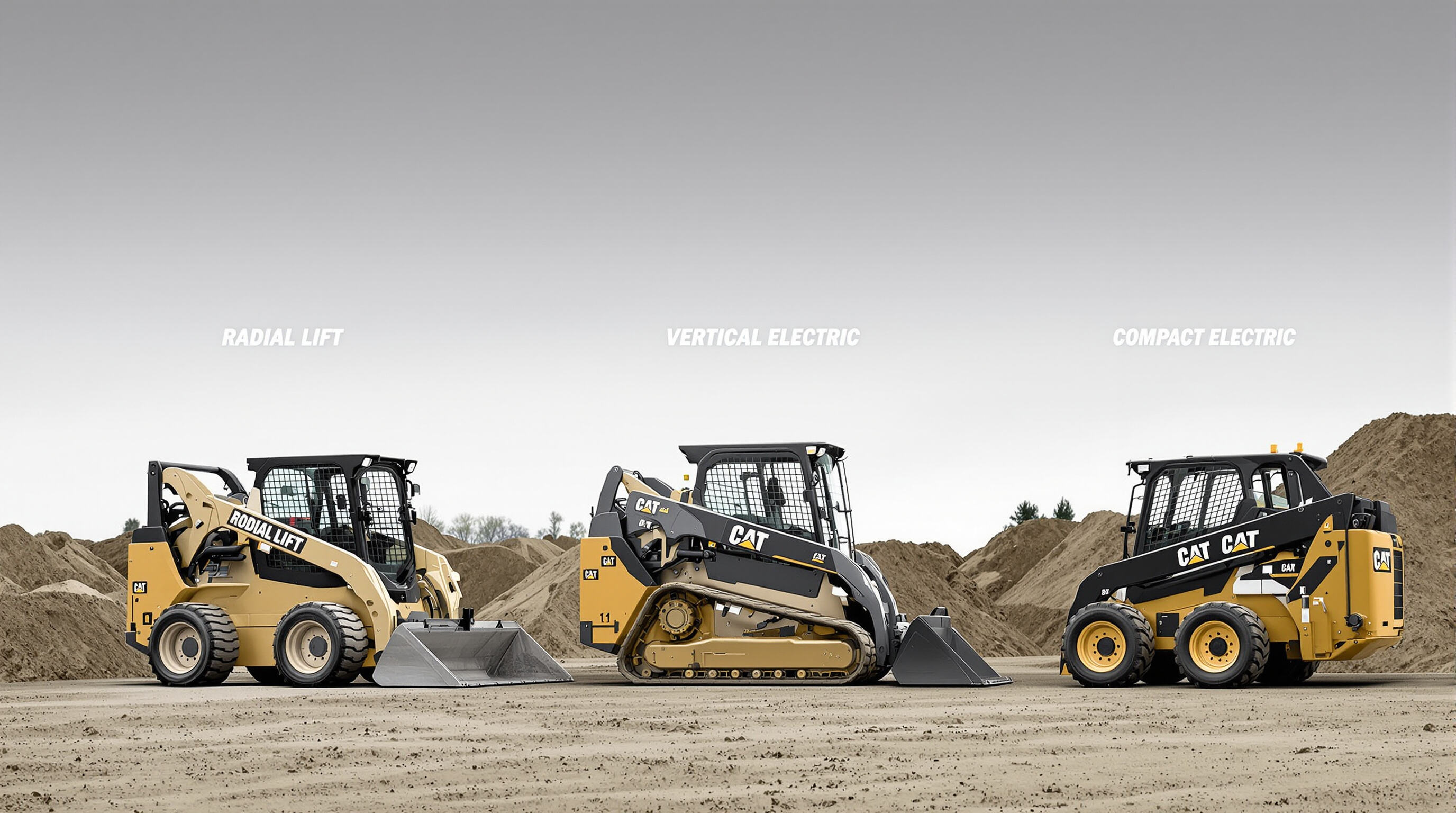Understanding the Skid Loader: Definition and Core Function
What Exactly Is a Skid Loader?
The skid loader, often called a skid steer, is basically a small, sturdy machine with hydraulics powering everything. What makes these machines special is their steering system. The wheels on each side work independently so operators can make those tight U-turns without needing any extra space. This really helps when working in places where room is limited, like inside old farm buildings, around city streets, or deep within construction sites that feel almost impossible to navigate. We're talking about machines that typically range from around 1,500 pounds up to about 3,000 pounds in weight. They manage to lift anywhere between one and two tons worth of stuff too, which is pretty impressive considering their size. According to some industry reports from last year, these stats hold true across most models available today.
- Compatibility with over 40 attachments (buckets, augers, grapples)
- Compact footprint averaging 6.5 feet long by 5 feet wide
- All-terrain performance via wheeled or tracked configurations
How the Skid Loader Differs from Other Compact Equipment
Skid loaders outperform compact tractors and mini excavators in maneuverability, workspace efficiency, and task versatility:
- Turning Radius: Achieves zero-turn capability, unlike tractors that require 8–12 feet
- Workspace Efficiency: Operates in spaces as narrow as 7 feet—48% tighter than backhoes
- Task Versatility: 78% of operators use at least six different attachments annually
While excavators excel at deep digging and tractors handle heavier towing, skid loaders are unmatched for multi-phase projects requiring rapid reconfiguration.
Primary Applications of the Skid Loader in Construction and Landscaping
Over 63% of skid loader usage occurs in construction and landscaping:
- Construction: Site grading, debris removal, and foundation material handling
- Landscaping: Installing irrigation systems, moving mulch (over 400 cubic yards per day), and trenching
A 2023 industry survey found that 92% of landscaping companies use skid loaders for winter snow removal, leveraging quick-switch plow attachments to clear parking lots three times faster than traditional trucks.
Key Components and Mechanical Design of the Skid Loader

Breakdown of the Skid Loader’s Hydraulic System
At the heart of any skid loader sits its hydraulic system, which typically pumps out around 15 to 23 gallons per minute according to ISO 14397 standards for regular models, though some heavy duty versions can push as much as 40 GPM. These systems take mechanical energy and turn it into hydraulic pressure that drives all sorts of attachments including augers and grapples. The whole thing relies on three main parts working in harmony: pumps, valves, and cylinders, ensuring everything keeps running smoothly even when things get tough. Modern loaders often feature load sensing technology too. This clever setup adjusts the pressure depending on what's needed at the moment, cutting down on fuel burn by roughly 17 percent when doing lighter work around the yard or job site.
Role of the Lift Arms and Attachment Mounting System
Large frame models can handle serious weight with lift arms supporting as much as 4,000 pounds. These arms control where attachments go when working around the machine. Radial lift paths work on an arc shape which helps get deeper into the ground and reach out low spots effectively. Vertical lifts just go straight up, great for putting things on shelves or getting stuff loaded onto big rigs. The mounting system for attachments meets the SAE J2513 specs so workers can switch tools fast. Most folks report changing attachments in less than half a minute, which makes a real difference in keeping operations moving smoothly from one task to another on construction sites.
Traction and Steering Mechanism Behind the Skid Loader’s Maneuverability
Skid steer loaders work by adjusting wheel speeds on either side so they can actually turn around in place, something really important when working in cramped areas. The whole system depends on strong axles and those tough all terrain tires that keep the machine from slipping even on slopes as steep as thirty degrees. Some newer machines come equipped with electro hydraulic steering systems now, and this makes life easier for operators since it cuts down on physical strain by roughly forty percent over traditional manual controls. That kind of improvement matters a lot when doing boring repeat jobs such as leveling ground surfaces or pushing snow around.
Types of Skid Loaders: Radial vs. Vertical Lift, Compact and Electric Models

Radial vs. Vertical Lift Path Skid Loaders
Radial lift skid loaders move along an arc shape, which works great for tasks like digging dirt or picking up material from the ground. Vertical lift versions lift things straight up, giving operators better access to higher places while keeping everything stable. The latest industry data shows vertical lifts are about 15 percent steadier when dealing with heavy stuff overhead, so many construction sites go this route. Radial lifts have simpler hydraulic systems though, and folks still love them on farms and in yards where digging and moving earth is everyday work. They just make sense for those particular jobs.
Compact Skid Loader Models for Tight Spaces
Compact skid loaders weigh under 5,500 lbs and measure less than 6 feet wide, enabling access to narrow urban sites, barns, or landscaped areas. Tracked versions reduce ground pressure by 35% compared to wheeled models, minimizing surface damage in sensitive environments such as gardens or indoor facilities.
High-Performance Skid Loader Variants for Heavy-Duty Tasks
Heavy-duty skid loaders feature reinforced frames and engines exceeding 100 HP, capable of lifting 3,500+ lbs. These models are designed for demanding applications like demolition, mining, and large-scale earthmoving, especially when paired with industrial attachments such as hydraulic breakers or rock grapples.
Electric Skid Loader Innovations and Sustainability Trends
Electric skid loaders eliminate 92% of jobsite emissions compared to diesel models while delivering equivalent torque. Leading manufacturers now offer fast-charging batteries (full charge in 1.5 hours) and regenerative braking systems, aligning with global emissions regulations and supporting sustainable construction practices.
Versatile Attachments That Enhance Skid Loader Functionality
Common Attachments: Buckets, Augers, and Snow Plows
What makes skid loaders so versatile? Well, they work with more than 50 different attachments which explains why these machines can handle so many jobs on site. Most come equipped with standard tools like those big buckets that hold anywhere from one to two cubic yards of material, plus there are augers for making holes and snow plows when things get icy outside during winter months. Switching from digging to moving stuff around or clearing snow isn't just possible it happens pretty fast too sometimes under fifteen minutes flat according to some folks who actually operate these machines daily. Speaking of buckets, recent industry research back in 2023 showed something interesting about them being absolutely critical for basic digging work across construction sites nationwide with nearly nine out of ten operators saying they couldn't do their job without one.
Hydraulic Attachments and Quick-Connect Systems for the Skid Loader
Today's skid steer machines typically pump around 15 to 25 gallons per minute through their hydraulics, which gives them enough muscle to run all sorts of attachments from dirt trenchers to heavy duty grapples. The real game changer though is those universal quick connect systems that let workers swap out attachments without breaking a sweat. Most models can switch tools in less than a minute and a half, so crews aren't sitting around waiting for equipment changes. Highway crews especially appreciate this feature since they often need to go back and forth between pallet forks for materials handling and brush cutters for roadside maintenance work up to eight times during an average day shift. And despite all these constant switches, there's hardly ever any hydraulic fluid leakage issues reported on modern units either.
Case Study: Skid Loader in Landscaping with Mulch Blowers
A Midwest landscaping firm increased project completion speed by 40% using skid-mounted mulch blowers. The setup distributed 15 tons of mulch per hour across uneven terrain—work previously requiring three laborers. Precision steering allowed targeted application around delicate plants, reducing material waste by 22% compared to manual spreading methods.
Top Skid Loader Brands and Industry Innovators
Global Brands Dominating the Skid Loader Market
Manufacturers who dominate the skid loader market have built their reputations on solid construction, reliable safety features, and constant technological improvements. Leading brands typically organize their offerings into different tiers, ranging from small machines suited for city parks and gardens all the way up to heavy duty models used in mines and forests. These companies spend a lot on making sure their hydraulic systems work efficiently and that attachments fit seamlessly onto the machines. According to recent industry reports from 2024 looking at the US market, what keeps these top players ahead of the competition isn't just good products but also massive dealer networks across the country. These networks make it easy to get replacement parts when needed and keep technicians properly trained to handle repairs and maintenance tasks.
Shandong Songsheng Heavy Industry Machinery Co Ltd: Engineering and Innovation in Skid Loaders
Shandong Songsheng is becoming pretty much the go-to name for affordable electric skid steer loaders these days. Their research team spends most of their time working on brushless motor tech and those modular battery packs that let operators swap them out quickly. What's interesting is how long these machines can run compared to traditional diesel units when doing lighter work around job sites. By making key components like axles, hydraulic pumps, and control systems themselves instead of outsourcing, they manage to cut down manufacturing expenses somewhere between 18% and 22%, according to last year's Heavy Machinery Quarterly report. Looking at what's new from them lately, there are these patented hydraulic couplers that snap together fast, plus some smart systems powered by artificial intelligence that adjust torque settings automatically depending on what kind of attachments are being used. Pretty impressive stuff for the price point.
Comparing Build Quality and After-Sales Support Among Skid Loader Manufacturers
The build quality gap between economy and premium equipment is pretty noticeable when looking at what goes into manufacturing. Steel grades matter a lot here, with ASTM A572 being standard for premium builds compared to the more basic A36 steel found in cheaper machines. Hydraulic hoses tell another story too, where premium units can handle bursts up to 5,000 PSI versus around 3,500 PSI for budget options. Warranty coverage reflects these differences as well. Most premium brands stand behind their products with 3 to 5 year powertrain warranties, whereas budget models usually come with just 12 to 18 month guarantees. For operators thinking long term, after sales matters big time. Companies offering online diagnostic systems tend to cut service wait times down by roughly 40%, according to Construction Tech Review from last year. Smart buyers are gravitating toward brands that provide lifetime fluid checks and proper certified rebuild programs for those essential parts that wear out over time.
FAQ
What are some key differences between skid loaders and other compact equipment?
Skid loaders offer superior maneuverability and task versatility, including zero-turn capability and the ability to use multiple attachments efficiently. In contrast, compact tractors require a larger turning radius and are limited in task flexibility.
How are skid loaders utilized in construction and landscaping?
In construction, skid loaders handle site grading, debris removal, and material handling. In landscaping, they're used for irrigation installation, mulch moving, trenching, and winter snow removal.
What innovations exist in modern skid loaders for sustainability?
Electric skid loaders significantly reduce emissions by 92% compared to diesel models. They feature fast-charging batteries and regenerative braking systems, supporting sustainable construction practices.
Table of Contents
- Understanding the Skid Loader: Definition and Core Function
- Key Components and Mechanical Design of the Skid Loader
- Types of Skid Loaders: Radial vs. Vertical Lift, Compact and Electric Models
- Versatile Attachments That Enhance Skid Loader Functionality
- Top Skid Loader Brands and Industry Innovators
- FAQ


